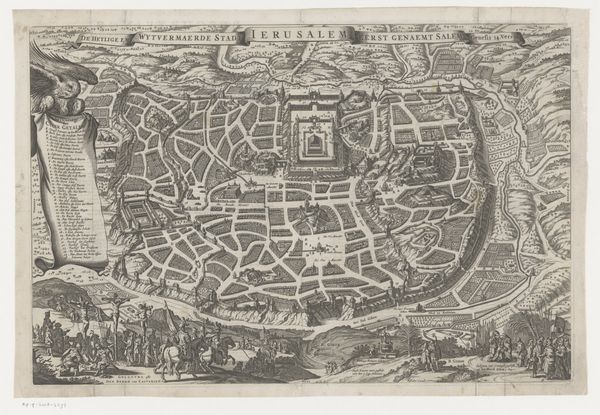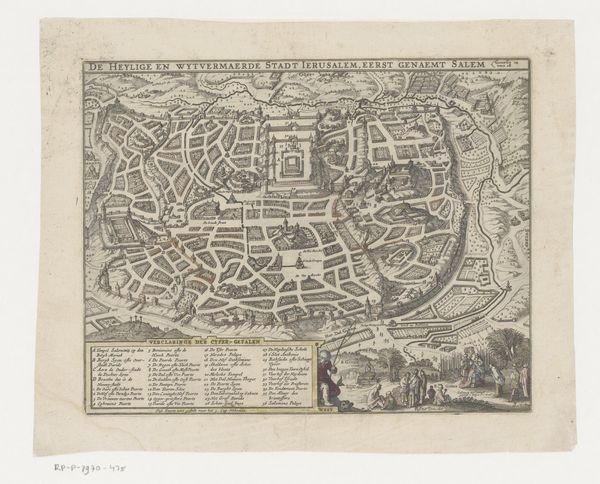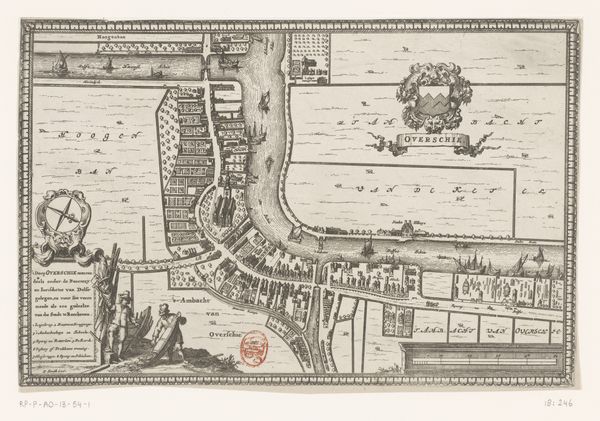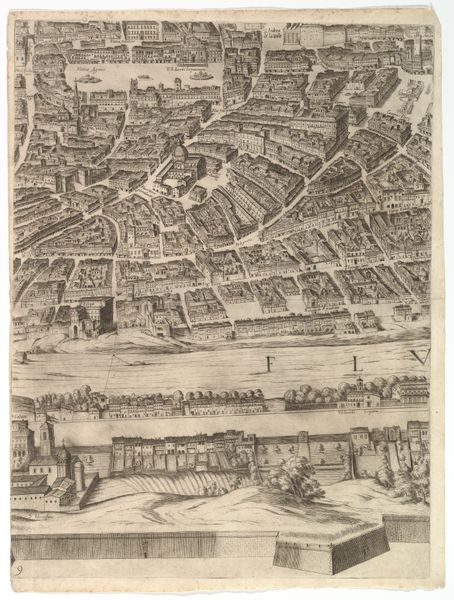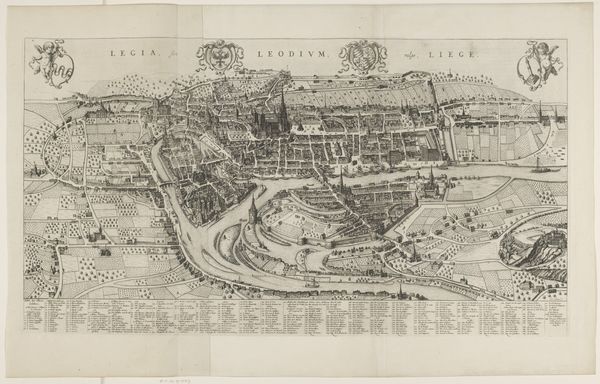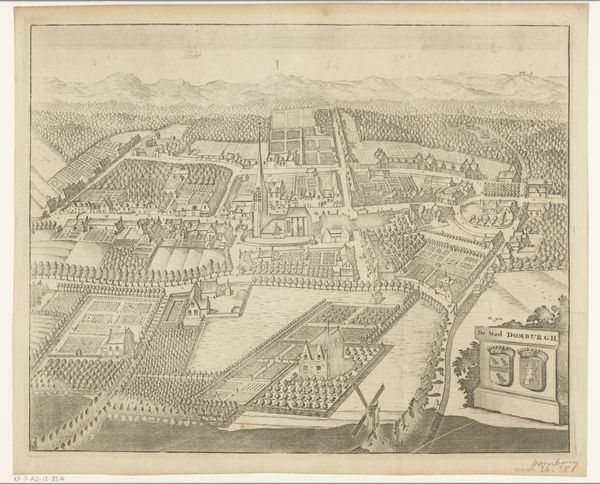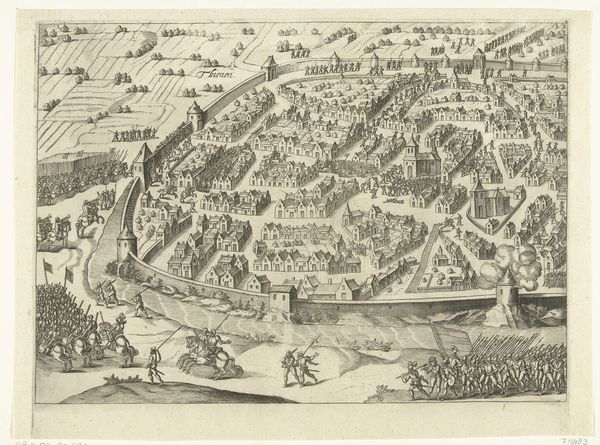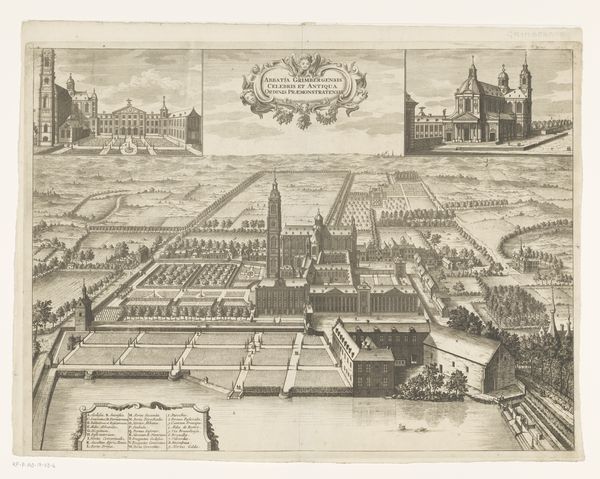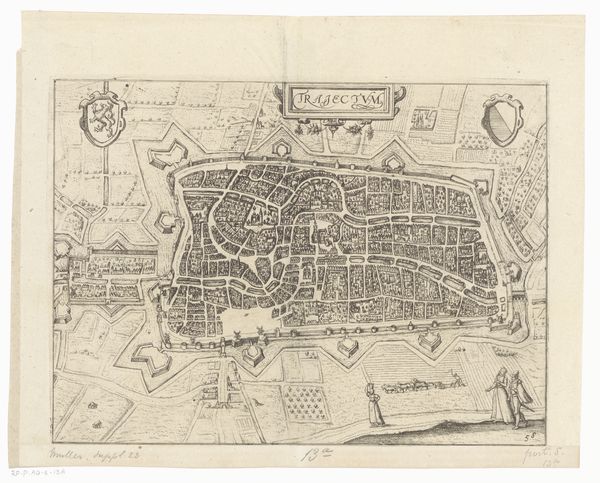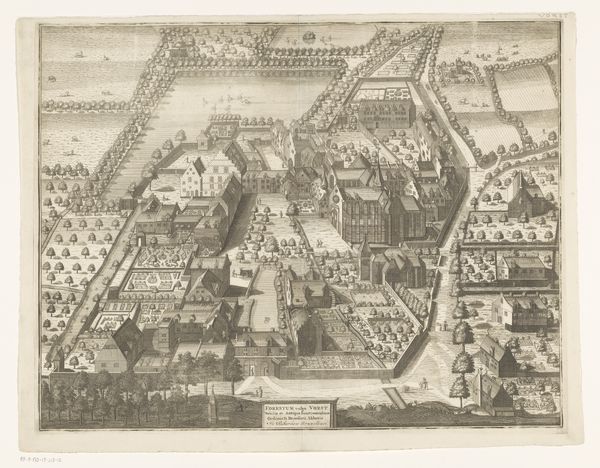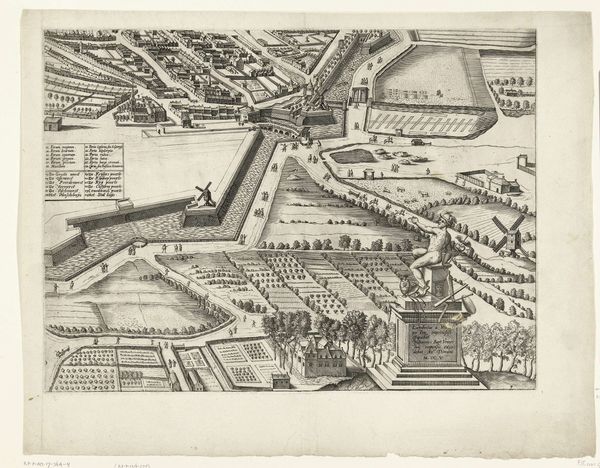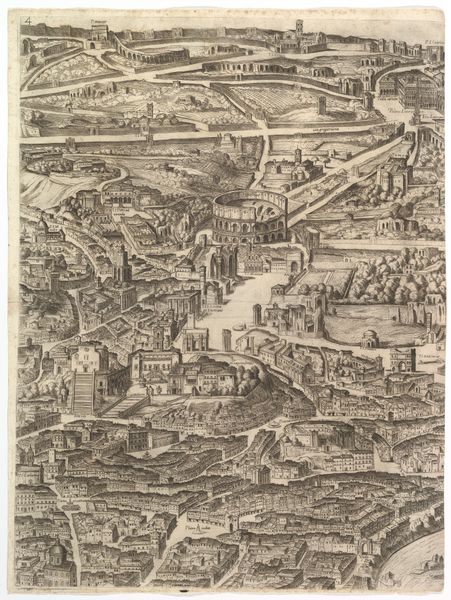
print, engraving
# print
#
old engraving style
#
cityscape
#
history-painting
#
engraving
Dimensions: height 569 mm, width 676 mm
Copyright: Rijks Museum: Open Domain
Curator: This engraving, created anonymously in 1879, offers a bird's-eye view of the Binnenhof. The level of detail is simply remarkable. Editor: It's like a miniature city unfolded, isn’t it? Makes you want to dive in, become Gulliver traveling through a political landscape of the past. It feels so meticulously constructed, but slightly stiff, don't you think? Curator: The stiffness, as you put it, is part of its historical value. These types of engravings served specific purposes; conveying information about the city’s layout, and its importance. This view allows us to see the relationship between the buildings, the Hofvijver, and the city's infrastructure in the late 19th century. It offers a glimpse into the political and social structures of that time. Editor: True, I see that. The details! I'm imagining the engraver, hunched over, their eyes watering after hours with such precise work. One can almost feel the weight of tradition and expectation pressing down – you know, representing the Binnenhof correctly. What's fascinating is to think of the power dynamics in a single image; those who commissioned the work, those represented within it, and those who are conspicuously absent. Curator: Precisely. And while the print is beautiful, it’s not without its biases. A view from above is often a position of power, surveying, managing, planning. Who gets to have that perspective, and how does it shape our understanding of the place and the time period? It reinforces particular hierarchies of power inherent to the city itself. Editor: The black and white adds this austere quality to it, heightening that sense of importance, of established order. It makes me think, who was this image made for, really? Was it intended for the elite to survey their domain, or for broader public consumption, reinforcing a sense of national pride? Curator: I believe the print was aimed towards broader consumption; these prints served as visual documents, shaping the perception of the Binnenhof as the center of Dutch political power, but also as reminders of a very particular kind of history, of political and social elites and their control over the public domain. Editor: So, in its way, the print becomes an instrument, not just an illustration, which shows how intertwined the image, its making, and its reception really were. It's like, the city itself is a stage, and this print is the script. Curator: An apt description. We must remember that viewing a seemingly straightforward landscape can, in fact, involve an assessment of power, perspective and the creation of very particular narratives. Editor: Well said! It really invites one to pause and reflect on how a static image can have so much dynamic implication.
Comments
No comments
Be the first to comment and join the conversation on the ultimate creative platform.
